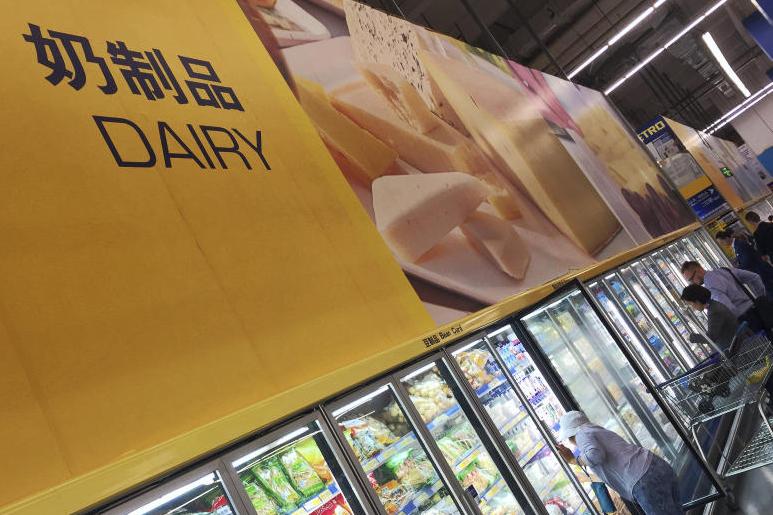The Irish beef industry received a huge boost in April this year with the announcement that China would import beef from Ireland.
This means Irish beef can join Irish dairy and pigmeat in the largest and fastest-growing consumer market for protein in the world.
Online retailing
With the rise of Amazon in the US and Europe as an online retailer selling a vast array of products, a major threat has been identified to traditional retail models. The large supermarket organisations, with varying success, have attempted to develop an online business themselves in response to this.
In China, however, the era of online dominance in retail, particularly for the well-educated growing middle class, has arrived. Young successful Chinese consumers don’t use cash nor even cards – everything is done by smartphone.
What has this got to do with Irish farmers?
The success of selling Irish beef in China will require the industry to fit into a hi-tech and rapidly developing food service sector which differs greatly from the Irish or indeed UK model. This is built around convenience packaging and presentation on the supermarket shelves.
Online sales growth is far outpacing the traditional retail shop or supermarket model. It is so pronounced that the top online retailers are investing in traditional supermarkets to assist their distribution network as well as cater for the tastes of the more traditional shopper.
JD.com
JD.com is the second largest of the online retailers, with 24% of the market which is rising year on year. As well as serving its customers directly, JD also acts a platform for other produce sellers, has a traditional retailing offer and acts in a wholesaler-type role in accommodating business to business sales.
Inside its huge headquarters in Beijing where 1,500 people are employed, robots are used to pick the products. Drones are used to make deliveries in remote areas. Regarding delivery, 95% of orders are delivered within 24 hours, with 57% being delivered within six hours of receiving the order.
Unique selling point
Unlike the market leader, Alibaba, JD doesn’t outsource delivery and distribution. Because of this, it has 515 warehouses across China and has been investing in traditional retailers such as Walmart, ASDA and Yonghui, a Chinese supermarket chain.
One example shown to the Irish Farmers Journal was the 7FRESH store. In this store when a consumer picks up products a screen above displays the relevant information including a satisfaction rating taken from the company’s database, which extends to almost 302m users.
This store provides a delivery service within half an hour to customers within 3km and at no charge for customers spending over the equivalent of €13 per purchase.
The future
JD.com is operating in a sector which is expected to grow from being a $41bn equivalent business in 2015 to a predicted $178bn equivalent business in 2020. This is the business model that Irish exporters will increasingly have to serve.
Read more
Watch: shopping at China's superconnected supermarkets
The Irish beef industry received a huge boost in April this year with the announcement that China would import beef from Ireland.
This means Irish beef can join Irish dairy and pigmeat in the largest and fastest-growing consumer market for protein in the world.
Online retailing
With the rise of Amazon in the US and Europe as an online retailer selling a vast array of products, a major threat has been identified to traditional retail models. The large supermarket organisations, with varying success, have attempted to develop an online business themselves in response to this.
In China, however, the era of online dominance in retail, particularly for the well-educated growing middle class, has arrived. Young successful Chinese consumers don’t use cash nor even cards – everything is done by smartphone.
What has this got to do with Irish farmers?
The success of selling Irish beef in China will require the industry to fit into a hi-tech and rapidly developing food service sector which differs greatly from the Irish or indeed UK model. This is built around convenience packaging and presentation on the supermarket shelves.
Online sales growth is far outpacing the traditional retail shop or supermarket model. It is so pronounced that the top online retailers are investing in traditional supermarkets to assist their distribution network as well as cater for the tastes of the more traditional shopper.
JD.com
JD.com is the second largest of the online retailers, with 24% of the market which is rising year on year. As well as serving its customers directly, JD also acts a platform for other produce sellers, has a traditional retailing offer and acts in a wholesaler-type role in accommodating business to business sales.
Inside its huge headquarters in Beijing where 1,500 people are employed, robots are used to pick the products. Drones are used to make deliveries in remote areas. Regarding delivery, 95% of orders are delivered within 24 hours, with 57% being delivered within six hours of receiving the order.
Unique selling point
Unlike the market leader, Alibaba, JD doesn’t outsource delivery and distribution. Because of this, it has 515 warehouses across China and has been investing in traditional retailers such as Walmart, ASDA and Yonghui, a Chinese supermarket chain.
One example shown to the Irish Farmers Journal was the 7FRESH store. In this store when a consumer picks up products a screen above displays the relevant information including a satisfaction rating taken from the company’s database, which extends to almost 302m users.
This store provides a delivery service within half an hour to customers within 3km and at no charge for customers spending over the equivalent of €13 per purchase.
The future
JD.com is operating in a sector which is expected to grow from being a $41bn equivalent business in 2015 to a predicted $178bn equivalent business in 2020. This is the business model that Irish exporters will increasingly have to serve.
Read more
Watch: shopping at China's superconnected supermarkets






 This is a subscriber-only article
This is a subscriber-only article










SHARING OPTIONS: